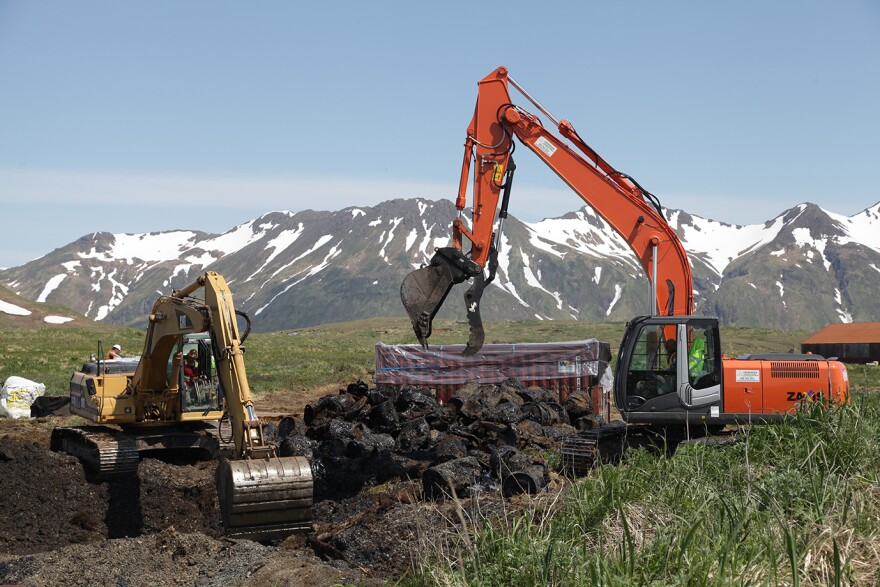The U.S. Army Corps of Engineers (USACE) is wrapping up its work on Attu for the season. This summer, the Corps made camp on the uninhabited, western-most island in the Aleutian chain.
Over six weeks, the Corps worked to clean up two World War II-era military sites that were leaking tar and petroleum, contaminating the soil and entrapping the sea birds living on the island.
The project cost $10 million and is part of the Corps’ Formerly Used Defense Sites Program (FUDS), which aims to reduce risks to human health and the environment stemming from properties that were formerly owned or possessed by the Department of the Defense.
Project Manager Andy Sorum said the environmental risks on Attu have been on the Corps’ radar for nearly a decade. “In the case of Attu, we had 52 above-ground storage tanks that were about 4,000 gallons each,” Sorum said. “And they had deposited about an acre and a half of surface tar that was still really sticky and had entrapped birds. It was an acute hazard.”
The land on Attu is owned by the Alaska Maritime National Wildlife Refuge, under the umbrella of the U.S. Fish and Wildlife Service. In addition to the Department of Defense, the Corps is subject to other regulatory agencies, like the Alaska Department of Environmental Conservation, the U.S. Environmental Protection Agency, and even the National Park Service.
It can be tricky to navigate the needs and wants of so many different groups, but cooperation between agencies is crucial when tackling such an urgent environmental problem. “That’s very critical, because these are federal agencies which don’t often have the same exact mission,” Sorum said. “It’s been a great opportunity for the agencies to get together, share their priorities, and talk about ways we can accomplish great work together.”
When the bulk of the field work was finished in mid-July, the Corps and its local contractor, Bristol Environmental Remediation Services, LLC, had removed about 10,000 tons of soil contaminated by petroleum, oil, and lead, along with 70 tons of tar drums and 52 massive storage tanks. One barge of contaminated soil was shipped out at the end of that month, and another will follow at the end of August.
While the Corps accomplished its major goals on the island, Sorum said plenty of work remains to be done. At one of the sites, for example, workers found significantly more drums than expected and didn’t have the resources to handle them all this summer.
A thorough investigation of other possible sources of contamination has also helped lay the groundwork for more progress on Attu in the years to come. Sorum said that in addition to the waste removal accomplished this summer, “the federal partners were out there doing planning and reconnaissance for future missions...and that was wildly successful.”
He said the team was able to collect a massive amount of data that will help them plan for future work on Attu and elsewhere in the Aleutian chain. The Corps is planning to return to Attu next summer to continue the cleanup.


